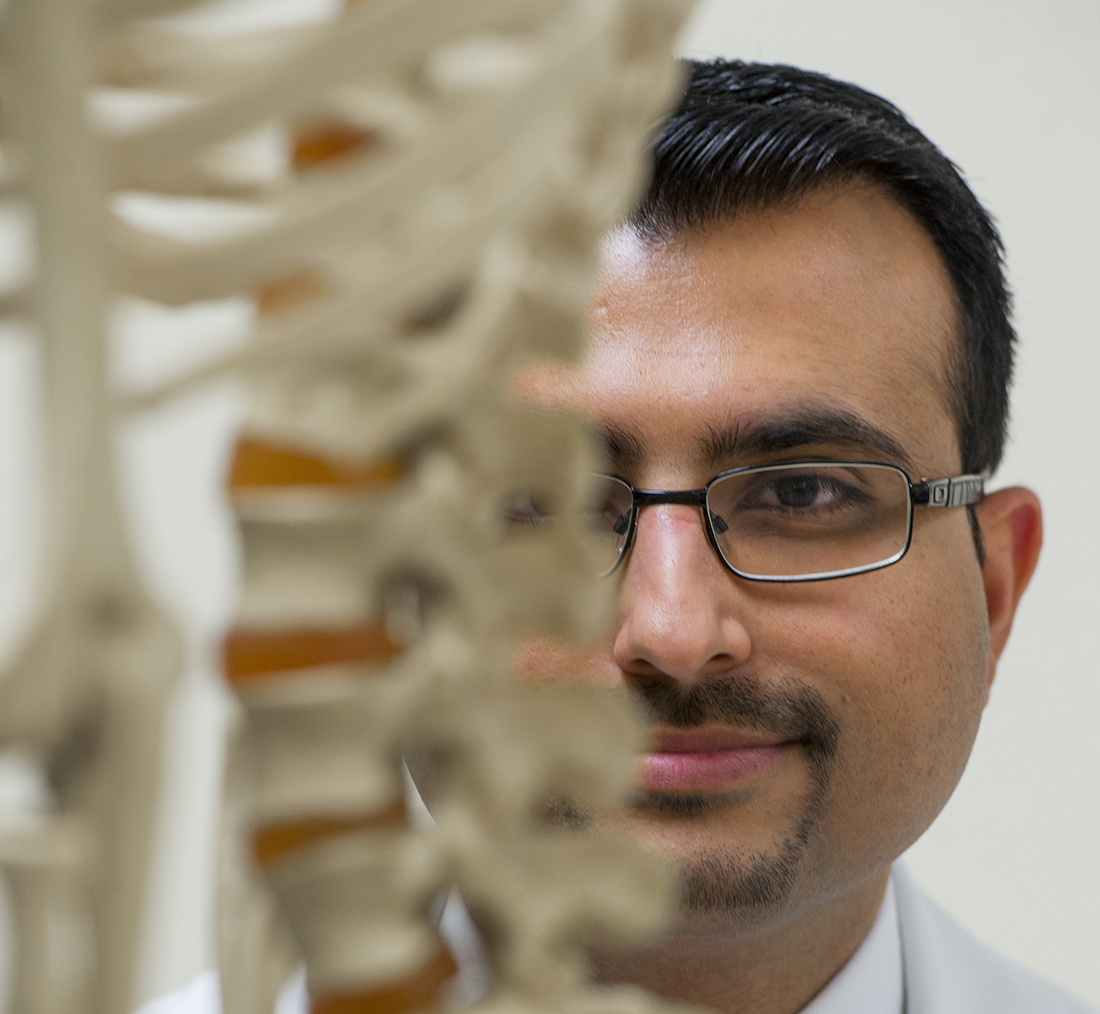Treating patients with spina bifida

Each day, approximately eight babies are born in the U.S. with spina bifida. More than 160,000 people nationwide live with this condition. The most common birth defect affecting the central nervous system, spina bifida, which literally means “split spine,” occurs when a fetus’ spine fails to close during the first month of pregnancy, resulting in incomplete development of the brain, spinal cord and in some cases, the vertebrae’s protective coverings.
For Faizan Kabani, who joined the Caruth School of Dental Hygiene faculty at Texas A&M College of Dentistry in June, this patient population is his calling. More than five years as a dental hygienist in the outpatient dental clinic at Texas Scottish Rite, a pediatric orthopedic hospital in Dallas, have left an impression. Kabani recalls one patient, a young girl, who lifted her hands up toward him as her appointment concluded, sparking a bit of confusion. Was she OK? He turned to her mother, who told him that her daughter was lifting up her hands in prayer; one of thankfulness.
“If anything I find it almost selfish, that the years that I worked there enabled me to sleep very peacefully at night,” Kabani says. “It was a very humbling process. The children will always be in my heart.”
From the clinical perspective, the experience of treating patients with spina bifida, cerebral palsy and other special needs has allowed Kabani the opportunity to amass an array of strategies for effective care. For spina bifida specifically, there’s a lot to consider: latex-free gloves to offset latex allergies, minimal water usage to mitigate a highly sensitive gag reflex, use of bean bags in the dental chair to take pressure off sensitive vertebrae, assessing for signs of skin breakdown in and around the mouth, special considerations for those with gastrointestinal and tracheotomy tubes, and the list goes on.
“No one is alike. That’s why it’s called special needs. It’s not handicapped; it’s genuinely special.” —Faizan Kabani
This is because while there are just four types of spina bifida, there are even more ways the condition manifests: full or partial paralysis, bladder and bowel control problems, obesity, learning disabilities, depression, social and sexual issues, and more.
Kabani, assistant professor in dental hygiene who supervises Caruth students in the college’s Special Care Clinic, shared treatment strategies during the 2016 Texas Oral Health Summit in November, winning second place in the Texas Oral Health Coalition’s poster presentations competition.
On a practical level, he explains the mindset behind providing straightforward guidelines to fellow clinicians.
“We’re treating a child with spina bifida, not a spina bifida child,” Kabani says. “You can have two or three patients with the exact same diagnosis, the exact same medications, and the exact same health record, but when they present to you, they will manifest very differently. No one is alike. That’s why it’s called special needs. It’s not handicapped; it’s genuinely special.”
Publication of Kabani’s article, “Caring for Patients with Spina Bifida,” in the January 2017 issue of Dimensions of Dental Hygiene means peers outside Texas have access to much of the same information outlined in his award-winning poster. In February, Kabani defends his doctoral dissertation to University of North Texas Health Science Center faculty. The topic: the relationship between adverse childhood experiences and oral health-related quality of life.
On the research front at the College of Dentistry, Kabani teaches research methods to students during the fall semester and applied research and a board review course come spring.
Meanwhile, he has kept in touch with his former supervisor at Scottish Rite, clinic director Maria Anderson ’94, ’01 (Caruth) to keep her informed of the admission process at the dental school’s Special Care Clinic, in efforts to help streamline young adults phasing out of the hospital’s dental program.
Preparing for clinic each week involves conversation with Kathy Muzzin, clinical professor in dental hygiene, who teaches special needs courses and supervised students in the Special Care Clinic for more than 20 years prior to Kabani’s arrival. When they talk, she’ll smile, share something about the patients on schedule to be seen that week, and an interesting thing happens in the process. It brings the patients ‘to life’ before Kabani even gets the chance to meet them.
While the location may have changed, Kabani has been working with Caruth students in the clinical setting for years, as rotations to Scottish Rite are a part of their training.
There’s one thing he always tells them at the outset.
“One of the very first lessons that I try to instill within my students is to understand these patients are not ‘one size fits all,’” Kabani says. “Most importantly is to approach them with a very gentle heart. These are patients who require more of your heart than your intellectual expertise. When you give them that care, they open up to you.”